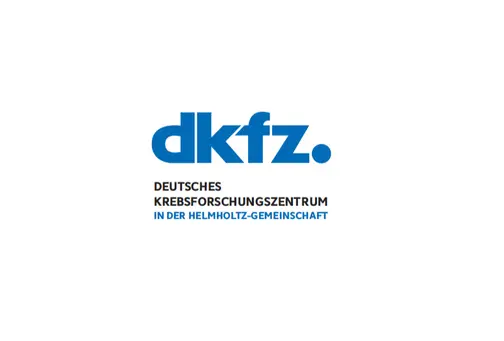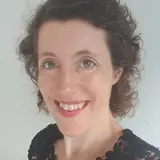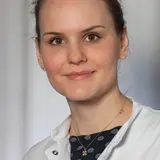Experimental Neurooncology

Prof. Dr. Frank Winkler
Unsere Arbeitsgruppe beschäftigt sich mit unmittelbar klinisch relevanten, aber auch grundlagenwissenschaftlichen Fragestellungen bei Tumoren, die im Nervensystem wachsen oder durch dieses stimuliert werden. Der sich dynamisch entwickelnde Forschungsbereich "Cancer Neuroscience" ist ein zentraler Schwerpunkt unserer Forschungsprojekte.

Unsere Forschung

Unsere Arbeit konzentriert sich auf die ‘Cancer Neuroscience’ von primären und sekundären Hirntumoren sowie Tumoren, die außerhalb des Gehirns wachsen.. Zur optimalen Untersuchung der zellulären Prozesse der Tumorentstehung und –ausbreitung haben wir in unserem Labor im DKFZ Methoden der in vivo-Zweiphotonenmikroskopie weiterentwickelt. Diese erlauben das Studium von Hirntumorzellpopulationen und deren Genexpression, Blutgefäßen, Gliazellen, Neuronen, und interzellulärer Kommunikation. Dadurch ist es erstmals möglich, im lebenden Organismus die komplexen und dynamischen Interaktionen von Zellen und Signalwegen bei der Entstehung, Progression und Resistenzentwicklung von Hirntumorerkrankungen über lange Zeiträume in höchster Auflösung zu verfolgen. Durch die Addition optogenetischer Methoden entwicklen wir derzeit die Möglichkeiten weiter, experimentell mit diesen Prozessen zu interagieren. Die relevanten Forschungsergebnisse unseres Labors in den letzten Jahren beinhalten die Entdeckung von kommunizierenden Tumorzell-Netzwerken als zentraler Faktor der Progression und Resistenz von Gliomen; die Nutzung neurobiologischer Signalwege durch Hirntumore für erfolgreiches Wachstum im Gehirn; und die Aufschlüsselung von zentralen Prozessen der Hirnmetastasierung, vor allem der frühen Hirnkolonisierung durch zirkulierende Tumorzellen, und die Bedeutung von neuronalen Faktoren dabei. Zusammengefasst ist unser Ziel, durch einzigartige Einblicke in die Hirntumorbiologie und Resistenzentwicklung in Kombination mit Patientendaten und modernen Methoden molekularer Analytik ein besseres Verständnis der zentralen Malignitätsfaktoren dieser herausfordernden Erkrankungen zu erhalten, und dieses schließlich in neuartige Therapiekonzepte zu überführen.
Social media: winklerlab.bsky.social (BlueSky)
Projects
The role of tumor microtubes (TMs) in brain tumor progression and the neurobiology of malignant glioma (Subgroup leader: Dr. Sophie Heuer (née Weil), Scientists: Dr. Salma Baig, Dr. Miriam Ratliff): We discovered that ultra-long and thin membrane extensions of tumor cells from incurable gliomas (including glioblastomas) which resemble neurites during neurodevelopment are highly relevant for tumor progression and resistance to therapies (Osswald et al., Nature 2015). The resulting multicellular tumor network allows intensive intercellular communication, and better cellular homeostasis, which results in resistance to radiotherapy and chemotherapy. The communicating tumor cell network is even able to repair itself, which is one mechanism of regrowth after surgical resection (Weil, Neuro Oncol 2017). So far, two neurodevelopmental molecular drivers of TM- and network formation have been identified. In ongoing projects, we aim to understand better 1) whether and how the astrocytoma network communicates with nonmalignant cells, 2) how neurodevelopmental processes are recapitulated in malignant glioma, and 3) how tumor microtubes, and the functional network they form, can be optimally targeted by therapies – to reduce the notorious treatment resistance of many brain tumors. https://www.dkfz.de/en/presse/pressemitteilungen/2015/dkfz-pm-15-51-Malignant-network-makes-brain-cancer-resistant.php In another, increasingly important line of research we aim to "crack the code" of the complex communication patterns in tumor networks. In a first publication we identified pacemaker-like tumor cells that rhythmically generate calcium oscillations, stimulating other network-connected tumor cells via their strategic position in network hubs. This activates specific downstream pathways in the entire tumor network, making brain tumors more aggressive and resilient (Hausmann et al., Nature 2023). This is another recapitulation of a neurodevelopmental mechanism, and potentially a new research field in oncology: "Cancer Rhythmology". Last but not least, the responsible ion channel (KCa3.1) is an interesting therapeutic target. https://www.dkfz.de/en/presse/pressemitteilungen/2022/dkfz-pm-22-72c-How-brain-tumors-keep-the-beat-and-why-that-makes-them-so-dangerous.php
Funding: SFB 1389, Unite_Glioblastoma (DFG, German Research Foundation)
Tumor networks in brain metastasis (Teamleader: Dr. Matthia Karreman): We were able to follow brain colonisation by single cancer cells over weeks to months, from vascular arrest to macrometastases formation - in real time and sub-cellular resolution (Kienast et al., Nat Med 2010; Karreman et al., J Cell Sci 2016). Taking advantage of this unique model, we were able to clarify important biological factors of the brain metastatic cascade. We combine expertise in intravital microscopy and correlative light and electron microscopy (Karreman et al, Trends Cell Biol 2016) to unravel the mechanisms of early brain seeding (Karreman et al, Cancer Res 2023) and interactions of brain metastases with their unique microenvironment. Importantly, this research also lead to novel concepts how to target them, preventing brain metastases formation (Feinauer et al, Blood 2020; Tehranian et al, Neuro Oncol 2021). The prevention of this devastating disease in many cancer patients that are at high risk of brain metastases development in the future bears the promise to make a relevant change in oncology. Therefore, a translational research program funded by the German Cancer Aid was initiated, with the aim to explore specific pathways and targeted therapies to lay the ground for a future brain metastases prevention study: prevent_BM. https://www.dkfz.de/de/presse/pressemitteilungen/2017/dkfz-pm-17-53c2-Forschungsziel-Gehirnmetastasen-verhindern.php In 2020 the e:Med Juniorverbund Project MelBrainSys has started, which is funded for five years by the German Federal Ministry for Education and Research (BMBF). This collaboration with the University Hospital Dresden aims to identify and target driver candidates of melanoma brain metastasis. https://www.dkfz.de/de/presse/pressemitteilungen/2020/dkfz-pm-20-21c-Hirnmetastasen-bei-schwarzem-Hautkrebs-BMBF-foerdert-Forschung-zu-neuen-Behandlungsstrategien.php
Funding: SFB 1389, Unite_Glioblastoma (DFG, German Research Foundation), RTG2099, Hallmarks of Skin Cancer (DFG, DKFZ und UMM); German Cancer Aid (Deutsche Krebshilfe), e:Med Systems Medicine, MelBrainSys (BMBF, Federal Ministry for Education and Research); Hertie Network of Excellence in Clinical Neuroscience (Hertie Foundation).
The role of neuron-glioma synapses for glioma progression and therapy resistance: Glioma cells and TM-connected glioma cell networks form bona-fide excitatory synapses with neurons, with the glioma cell as the postsynaptic partner. Those neuron-glioma synapses generate many of the intercellular calcium waves that are typical for TM-connected glioma cell networks, and ultimately stimulate glioma growth and invasion (collaboration with the lab of Th. Kuner, Neuroanatomy Heidelberg: Venkataramani et al., Nature 2019; published back-to-back with Venkatesh et al., Nature 2019). Those neuron-glioma synapses that can be found throughout all animal models of incurable gliomas so far, and also in resected patient tissue, present a novel target for anti-tumor therapies. https://www.dkfz.de/en/presse/pressemitteilungen/2019/dkfz-pm-19-41c-Neurons-promote-growth-of-brain-tumor-cells.php Further joint work demonstrated the role of network-unconnected glioblastoma cells: they are colonizing the normal brain, hijacking distinct neuronal mechanisms on 3 layers (molecular, cellular invasion, neuron-glioma synapses). Those cells extend 1 or 2 TMs that dynamically scan the brain, and allow fast invasion, later leading to establishment of more stable tumor cell networks (Venkataramani et al., Cell 2022). This work also increases our understanding of the functional relevance of tumor cell heterogeneity in glioblastoma. https://www.klinikum.uni-heidelberg.de/newsroom/brain-tumor-cells-invade-the-brain-as-neuronal-free-riders/
Interactions between extracranial tumors and the nervous system (Scientist: Dr. Christina Nürnberg): Based on our findings in the context of cerebral tumor manifestations, we hypothesize that also outside the brain our nervous system has significant impact on the tumor biology of different entities. The overall aim of our novel research focus thus is to shine a light on these interactions e.g. through whole body imaging and thereby identify potentially interesting new therapeutical targets.
Members of the Research Group Experimental Neurooncology
-

Prof. Dr. Frank Winkler
Group Leader
-

Matthia Andrea Karreman
Teamleader Brain Metastases Research
-

Sophie Heuer
Teamleader Tumor Microtubes in Glioblastoma
-

Dr. Miriam Ratliff
-

Dr. Salma Baig
-
Dr. Andres Flores Valle
-

Dr. Christina Nürnberg
-

Calvin Thommek
-
Erinne Cherisse Ong
-

Melina Müller
-

Luisa Kües
-

Nils Hebach
-

Joana Schlag
-
Jonas Künzel
-
Kirill Mironov
-

Lea Badura
-

Nico Horsak
-
Chanté Desiree Mayer
-
Susann Wendler
-
Julia Mäurer
Ausgewählte Publikationen
D Azorín D, Hoffmann DC, Hebach NR, Jung E, Hausmann D, Ratliff M, Hai L, Horschitz S, Jabali A, Osswald M, Karreman MA, Kessler T, Wendler S, Mayer CD, Löb C, Lehnert P, Cebulla G, Reibold D, Khajuria RK, Bordignon P, Moor AE, Holland-Letz T, Reckless J, Ramsden N, Grainger D, Kreshuk A, Koch P, Wick W, Heuer S, Winkler F.
Matthia A. Karreman and Frank Winkler
Messmer JM, Thommek C, Piechutta M, Venkataramani V, Wehner R, Westphal D, Schubert M, Mayer CD, Effern M, Berghoff AS, Hinze D, Helfrich I, Schadendorf D, Wick W, Hölzel M, Karreman MA*, Winkler F*.
Venkataramani V*, Karreman MA*, Nguyen LC, Tehranian C, Hebach N, Mayer CD, Meyer L, Mughal SS, Reifenberger R, Felsberg J, Köhrer K, Schubert MC, Westphal D, Breckwoldt MO, Brors B, Wick W, Kuner T#, Winkler F#.
Hausmann D, Hoffmann D C, Venkataramani V, Jung E, Horschitz S, Tetzlaff S K, Jabali A, Hai L, Kessler T, Azorín D D, Weil S, Kourtesakis A, Sievers P, Habel A, Breckwoldt M O, Karreman M A, Ratliff M, Messmer J M, Yang Y, Reyhan E, Wendler S, Löb C, Mayer C, Figarella K, Osswald M, Solecki G, Sahm F, Garaschuk O, Kuner T, Koch P, Schlesner M, Wick W and Winkler F.
Karreman MA, Bauer AT, Solecki G, Berghoff AS, Mayer CD, Frey K, Hebach N, Feinauer MJ, Schieber NL, Tehranian C, Mercier L, Singhal M, Venkataramani V, Schubert MC, Hinze D, Hölzel M, Helfrich I, Schadendorf D, Schneider SW, Westphal D, Augustin HG, Goetz JG, Schwab Y, Wick W, Winkler F.
Venkataramani V, Yang Y, Schubert MC, Reyhan E, Tetzlaff SK, Wißmann N, Botz M, Soyka SJ, Beretta CA, Pramatarov RL, Fankhauser L, Garofano L, Freudenberg A, Wagner J, Tanev DI, Ratliff M, Xie R, Kessler T, Hoffmann DC, Hai L, Dörflinger Y, Hoppe S, Yabo YA, Golebiewska A, Niclou SP, Sahm F, Lasorella A, Slowik M, Döring L, Iavarone A, Wick W, Kuner T*, Winkler F*
Venkataramani V, Tanev DI, Strahle C, Studier-Fischer A, Fankhauser L, Kessler T, Körber C, Kardorff M, Ratliff M, Xie R, Horstmann H, Messer M, Paik SP, Knabbe J, Sahm F, Kurz FT, Acikgöz AA, Herrmannsdörfer F, Agarwal A, Bergles DE, Chalmers A, Miletic H, Turcan S, Mawrin C, Hänggi D, Liu HK, Wick W, Winkler F*, Kuner T*.
Kontaktieren Sie uns

Prof. Dr. Frank Winkler
Head of the Experimental Neurooncology Research Group & Managing Senior Physician, Department of Neurology University Hospital Heidelberg
